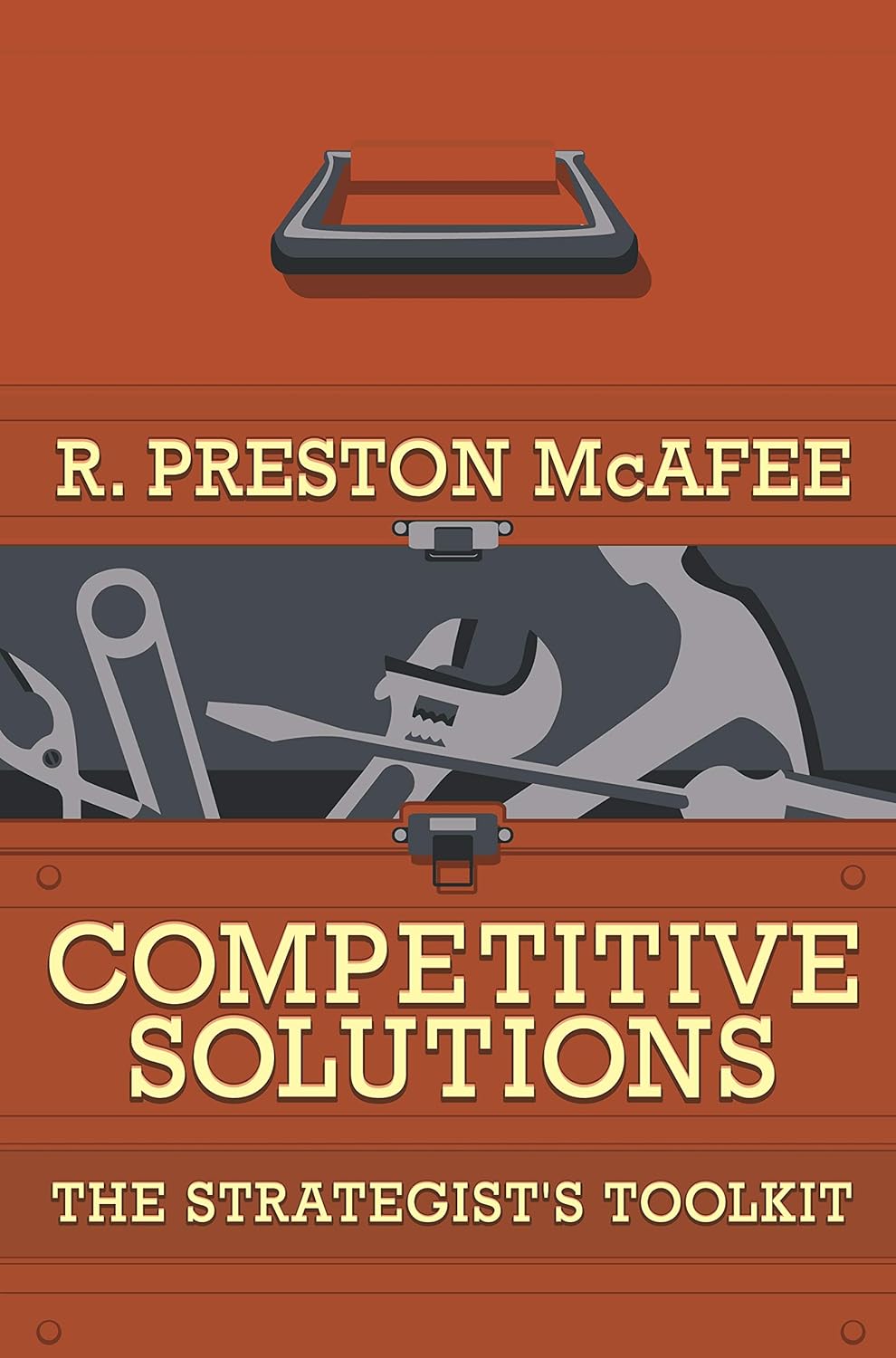Competitive Solutions: The Strategist's Toolkit
A comprehensive guide offering strategic tools for business challenges, emphasizing game theory, pricing strategies, and market analysis.
Subjects: Strategy
“Competitive Solutions: The Strategist’s Toolkit” by R. Preston McAfee is a crucial resource for strategists seeking to navigate the complexities of modern business landscapes. Unlike many academic texts that dwell on the theoretical aspects of business strategy, McAfee’s work stands out for its practical approach, focusing on actionable insights that can be directly applied to real-world situations. This review aims to dissect the key components of McAfee’s toolkit, evaluate its applicability, and compare it with other seminal works in the field of business strategy.
Theoretical Foundation and Practical Application: At its core, the book rests on a solid theoretical foundation, drawing heavily from game theory to explain the dynamics of competitive strategy. McAfee argues that understanding the principles of game theory is essential for strategists to predict and influence the behavior of competitors. This perspective is particularly enlightening as it shifts the focus from static analysis to dynamic interaction, a critical aspect often overlooked in traditional strategy frameworks.
Unique Emphasis on Specific Strategic Tools: One of the distinguishing features of McAfee’s toolkit is its emphasis on specific areas such as pricing strategies, litigation, and antitrust issues. By delving deep into these topics, McAfee provides readers with a nuanced understanding of how these elements can be leveraged to gain competitive advantage. For instance, the discussion on pricing strategies goes beyond conventional approaches, offering insights into how pricing can be used as a signal to competitors or as a barrier to entry.
Comparison with Other Strategic Texts: When compared to other seminal works in business strategy, such as Michael Porter’s “Competitive Strategy,” McAfee’s book adopts a more hands-on approach. While Porter lays the groundwork for understanding competitive forces and their impact on strategy, McAfee offers a toolkit for action. This practical approach makes “Competitive Solutions” particularly valuable for practitioners and those directly involved in strategic decision-making processes.
Real-world Examples and Case Studies: The inclusion of real-world examples and case studies is another strength of the book. Through these examples, McAfee illustrates how the theoretical concepts discussed can be applied in practice. These case studies not only make the material more accessible but also demonstrate the versatility of the strategic tools across different industries and scenarios.
Limitations and Areas for Further Exploration: Despite its strengths, the book is not without limitations. One area where it could be further enriched is in the discussion of digital transformation and its impact on traditional business models. As the business world continues to evolve rapidly, incorporating insights on navigating digital disruption could make the toolkit even more relevant.
Conclusion: In conclusion, “Competitive Solutions: The Strategist’s Toolkit” is a seminal work that provides valuable insights and practical tools for anyone involved in strategic planning. Its focus on actionable strategies, grounded in a deep understanding of game theory and market dynamics, sets it apart from other texts in the field. While it excels in offering a hands-on approach to strategic challenges, future editions could benefit from a deeper exploration of digital transformation’s implications on strategy.
Engagement: For readers interested in further exploration, comparing McAfee’s perspectives with those in “Blue Ocean Strategy” by W. Chan Kim and Renée Mauborgne could provide additional insights into creating uncontested market spaces versus competing in crowded markets.
Similar Book Suggestions:
- “Competitive Strategy” by Michael E. Porter
- “Blue Ocean Strategy” by W. Chan Kim and Renée Mauborgne
- “Good Strategy Bad Strategy” by Richard Rumelt
- “Playing to Win” by A.G. Lafley and Roger L. Martin
This review aims to provide a comprehensive understanding of “Competitive Solutions: The Strategist’s Toolkit,” highlighting its contribution to the field of business strategy and offering avenues for further exploration and comparison.
Comprehensive set of tools for strategists. Here is a summary of the tools and concepts presented throughout the book:
- Industry Analysis: Analyzes the structure of industries through the lens of the “Five Six Forces” (originally Porter’s Five Forces with the addition of Complements as the sixth force), entry barriers, buyer and supplier power, substitute products, rivalry among existing competitors, and strategies for dealing with complements.
- Firm Strategies: Discusses various strategies firms can adopt, including value/cost strategies, quality choices, competition dynamics, accommodation and dissuasion strategies, low-cost strategies, and the importance of coherent strategic positioning.
- Differentiation: Explores strategies for differentiating products and services in the marketplace, including creating synergies, leveraging quality complementarities, harnessing network effects, navigating technological races, and applying patent strategies.
- Product Life Cycle: Examines the stages of the product life cycle (introduction, growth, maturity, and decline) and strategies for each phase, highlighting the unique considerations for durable goods.
- Cooperation: Covers the dynamics of cooperation between firms, including tacit collusion, shared interests, and strategies for overcoming problems associated with tacit cooperation. It also discusses solutions to cooperation problems, such as industry associations and published price lists.
- Organizational Scope: Addresses decisions related to the organization’s scope, including make-or-buy decisions, integration strategies, and considerations around transaction costs and project selection.
- Incentives: Focuses on designing incentive structures within organizations, including efficiency wages, managing creative talent, multitasking, and implementing competitive mechanisms like tournaments.
- Antitrust: Provides an overview of major antitrust laws and strategies for navigating the legal landscape, including considerations for mergers and strategies to avoid anticompetitive practices.
- Elementary Statistics: Introduces basic statistical concepts and their importance in strategic decision-making, including opinion polls, the precision of statistics, and the application of statistics in strategy formulation.
- Pricing: Discusses various pricing strategies and their strategic implications, including price discrimination, bundling, peak-load pricing, and yield management. It also addresses strategies to soften price competition and the role of pricing in complement strategies.
- Auctions: Explores the dynamics of auctions, including different types of auctions, strategies for bidding, and considerations for auction design.
- Signaling: Examines the concept of signaling in business strategy, including how firms can use signals to convey information to the market, competitors, and consumers.
- Bargaining: Addresses strategies for effective bargaining, including understanding the basic theory of bargaining, strategies for delay, and navigating complex bargaining scenarios like lawsuits and contract negotiations.




